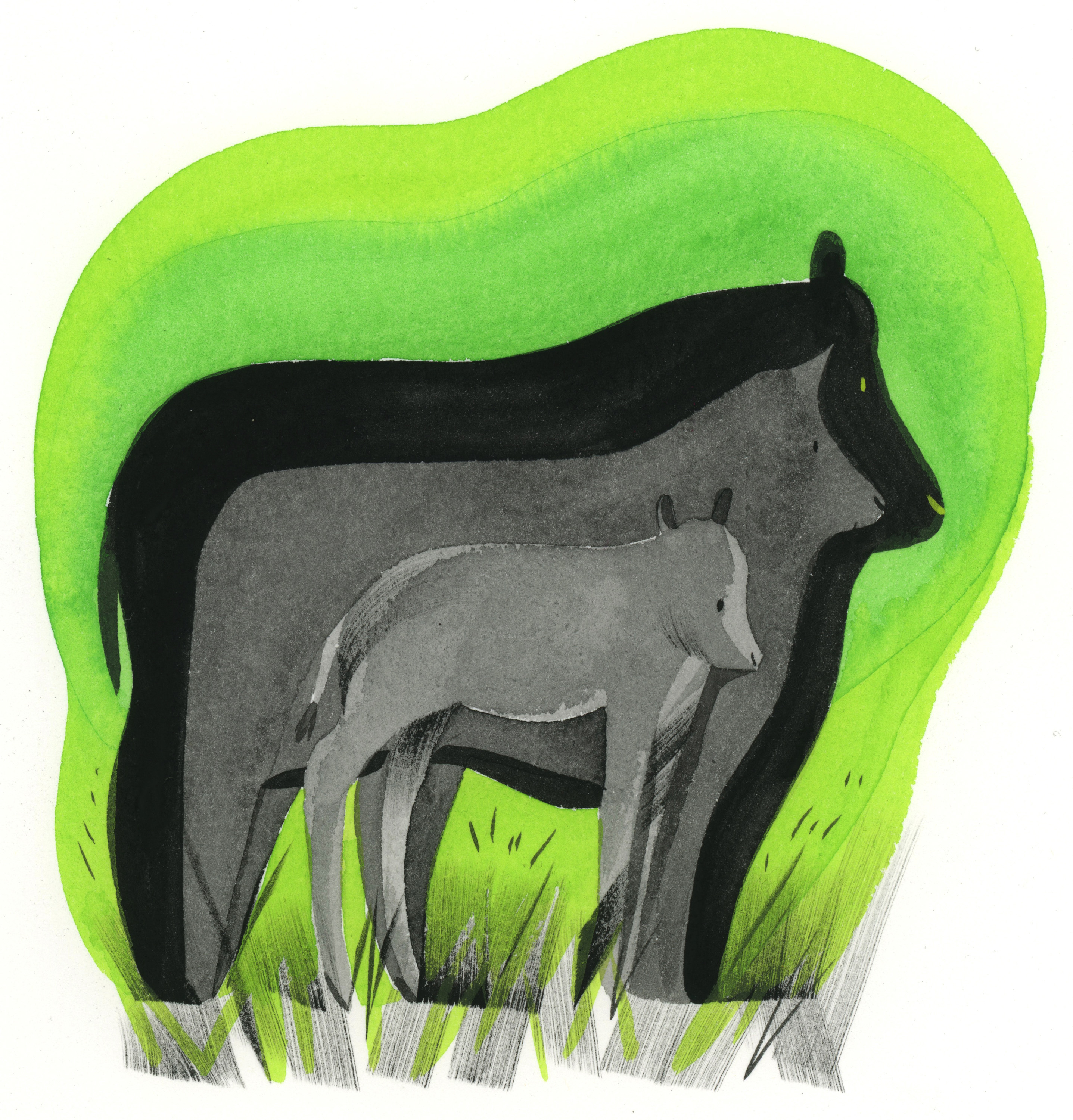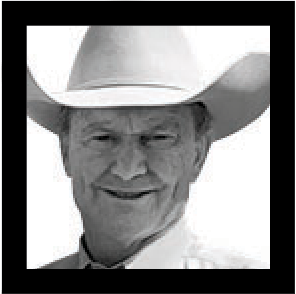Breeding the right kind of cow


Partner, MCAdams Cattle Company,
and owner,
12 Bar Ranch,
Seguin, Texas
This story is one of a series about how hidden innovations produce the foods we eat at the prices we pay. It has been edited for length and clarity. As told to Krithika Varagur.
Since last year, I’ve had some trouble with our calves’ health. We’re not sure what’s going on. We think it might be extreme heat. You’ve probably heard of Certified Angus Beef, a real popular brand of meat—when you sell cattle that qualify, they will bring a premium. But one of the qualifications to get in that program is that they have to be from black-hide cattle, which are not as heat-tolerant as some other breeds. Mine are not 100% Angus, but they’re about 75% Angus. And when it’s real hot, we think those calves are just weak from the heat and they don’t have the vigor to get up and nurse. I lost some calves from heatstroke, I think, last year.
It’s difficult for us to change our breeding program rapidly, but that’s where we’re benefiting from a lot of advances in technology and in research. “Seedstock” producers raise breeding animals, using techniques like artificial insemination and embryo transfer. These technologies are expensive, and it is not unusual for seedstock producers to sell their bulls to other ranchers for $30,000 or more. You’d be lucky to raise a hundred calves from a bull in his lifetime if you just turn him out naturally with the cows, but using advanced reproductive technologies enables that bull to sire several thousand calves.
Heterosis refers to the tendency for a cross-bred hybrid animal to often have better traits (like weight or longevity) than its parents. And it’s a great tool for getting the breeds right. Basically, you have genetic differences in different breeds of an animal, and if you cross them, those genetic differences give you a bounce. The more distant the bloodlines, the more heterosis you’re going to get. An example of how I use this in practice is crossing Bos indicus cattle, which evolved in the southern parts of the world, with our native Bos taurus cattle, in order to increase their heat tolerance and longevity.
Technology has spread like weeds in the ranching world. In the 1970s, artificial insemination became a widespread tool. In the 1990s, we also started to see modern techniques like gene mapping and DNA testing that help us balance our breeds. There is a cost to gene mapping because you have to test your animals, get them into a database, pay all these fees, pay for animal IDs, all of those things. But it lets us see which bulls have, for example, specific genes for growth. So it makes genetic progress for whatever our target is much faster.
The average cow’s weight 50 years ago was probably 900 pounds. In the ’70s, it was probably 1,000 pounds. Today, it’s about 1,300 pounds. It takes more acres to maintain cows of that size. And they produce much bigger calves, and require more feed in the winter. In the ’50s, in the early ’60s, we got cattle too fat and too small, and their productive life was too short. Then in the ’70s—I graduated college in 1972—there was this war on fat in the industry because the medical field had determined that eating too much fat was bad for people’s hearts. We really focused on getting cattle that would be more efficient, bigger, leaner. That took us about 20 years. And we overdid it. We realized that we were losing the eating experience, because the meat was getting too tough. There’s a fair amount of trial and error. Today, we’re somewhere in the middle. I think we’ve hit the sweet spot. You won’t really find yourself in a restaurant anymore saying, “I broke my tooth on that steak.”
Breeding the right kind of cow has been one of the main interests of my career. It’s a challenge, because the life cycle of a bovine is pretty long, compared to any other meat protein.
Deep Dive
Biotechnology and health
How scientists traced a mysterious covid case back to six toilets
When wastewater surveillance turns into a hunt for a single infected individual, the ethics get tricky.
An AI-driven “factory of drugs” claims to have hit a big milestone
Insilico is part of a wave of companies betting on AI as the "next amazing revolution" in biology
The quest to legitimize longevity medicine
Longevity clinics offer a mix of services that largely cater to the wealthy. Now there’s a push to establish their work as a credible medical field.
There is a new most expensive drug in the world. Price tag: $4.25 million
But will the latest gene therapy suffer the curse of the costliest drug?
Stay connected
Get the latest updates from
MIT Technology Review
Discover special offers, top stories, upcoming events, and more.